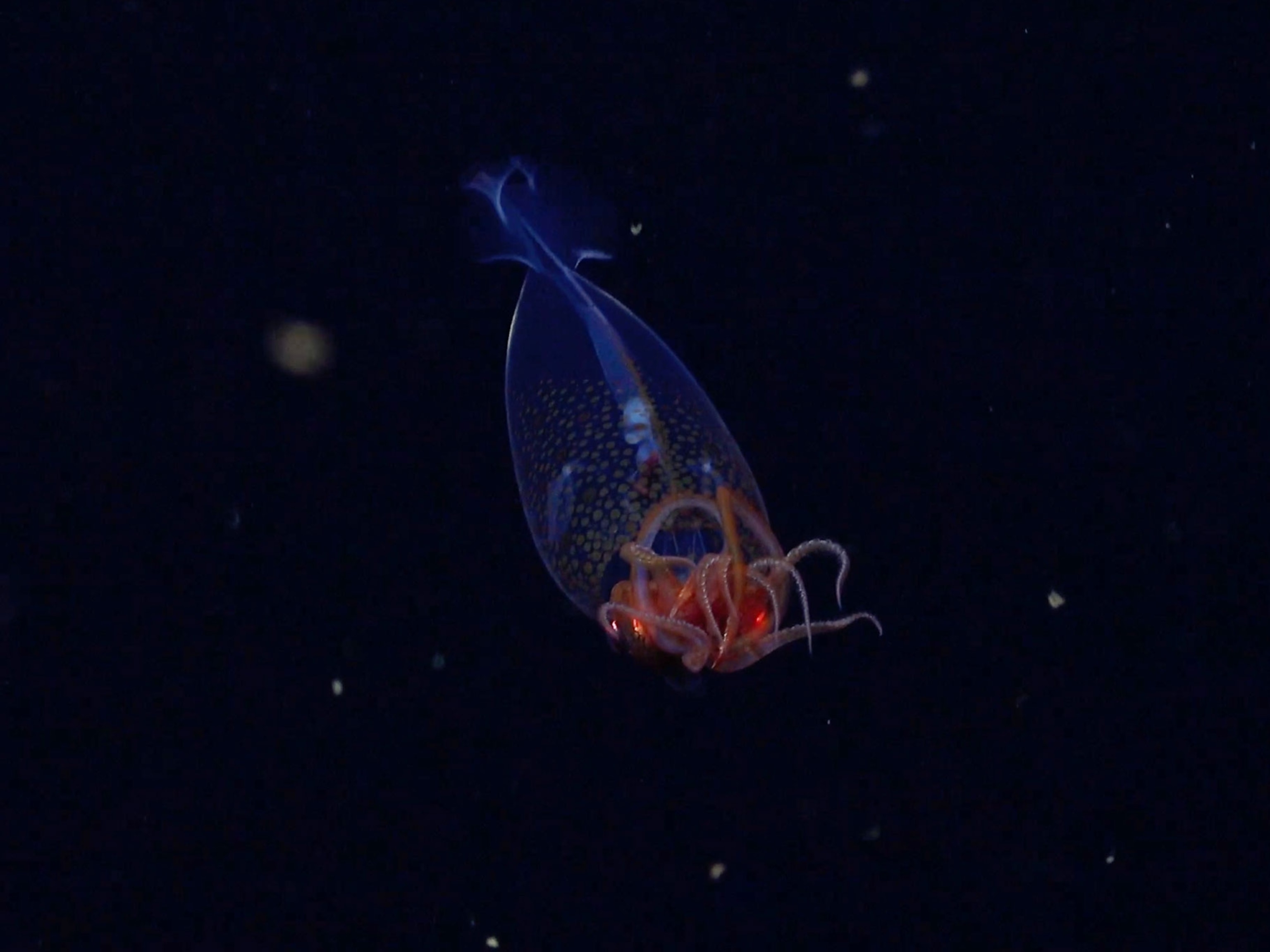
Fossil Ink Sacs Yield Jurassic Pigment—A First
Ink "strikingly" similar to that of modern cuttlefish, study says.
The ink's been dry for 160 million years—but scientists have for the first time confirmed pigment in two fossilized ink sacs from cuttlefish-like animals, a new study says.
The ancient ink's similarity to modern squid ink suggests this defensive weapon hasn't evolved much since the Jurassic period (prehistoric time line).
The brownish-black fossil pigment—a type of melanin called eumelanin—is widespread in the animal kingdom, for example in bird feathers, squid ink, and human hair and skin. The substance has various functions, including protection from the sun and camouflage.
Scientists have previously found hints of eumelanin in fossils, but they've done it through indirect, less reliable means—such as by analyzing images of presumed granules, which is problematic in part because melanin granules resemble bacteria, said study co-author John Simon.
Now Simon and colleagues have used a variety of direct, high-resolution chemical techniques—including scanning electron microscopy and mass spectrometry, which measures the masses of individual ion molecules—to identify eumelanin in the fossilized ink sacs.
Found recently in the floor of a long-gone sea in the United Kingdom, the Jurassic ink sacs somehow escaped decomposition, providing scientists with "exceptional" soft tissue specimens, the study says.
"We all got pretty excited about looking at these ancient fossils," said Simon, a chemist at the University of Virginia in Charlottesville.
(See "Dinosaur True Colors Revealed for First Time.")
Indelible Ink
Finding the pigment was anything but easy. For one thing, "black stuff is hard to study by any spectroscopy ... It simply absorbs light," he said. For another, taking fossils apart to study a melanin specimen's makeup is problematic, because so far scientists haven't figured out how to do so without destroying the pigment's molecular structure.
Using several different techniques, though, the team was able to confirm that melanin had survived intact in the ink sacs. They then compared the chemical properties of the Jurassic pigment with those of ink from living common cuttlefish, which release clouds of ink to confuse predators.
"As far as we can tell by everything we've thrown at it, the [ancient] ink is indistinguishable from modern ink," he said.
That the ink hasn't changed over the millennia may not be too surprising, since "it's a pretty good defense mechanism," he said.
Overall, the study hints at soft tissue's promise as a new resource for learning about the ancient world. (See "Dinosaur Slime Sparks Debate Over Soft-Tissue Finds.")
"As we look back and think about what we know about life before our time, it's mostly through skeletal info," Simon said. "What's beginning to happen now is that people are realizing that, in addition, there is soft tissue that's being preserved.
Studying soft tissue, he added, "could give us a whole new window into species that are extinct and their relationships to modern-day" life-forms.
The fossil ink-sac study was published Monday online by the journal Proceedings of the National Academy of Sciences.





